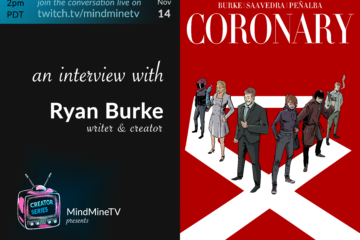Filmmaking: Simplicity and Its’ Complications
“If theatre acting is an operation with a scalpel,
movie acting is an operation with a laser.”
– Michael Caine
With over 10 years of experience within these industries, this quote has to be one of my favorites, as it describes the precision required in both realms of storytelling and entertainment, as well as the differences between the two. It is that difference of precision that drew so many in the industry towards film, originally. And, even though that initial draw had brought about immense advances in film since the 1890’s, much of that vital precision is, sadly, disappearing.
In the early age of filmmaking, not only could the basics of costumes, lighting, set, and actors tell a story, but also a new foundational aspect in the form of the camera lens. The camera brought truer realism to the audience, and also became a voiceless guide unveiling the smallest details: from hints of a character’s psyche to the unspoken foundation of a relationship. Even though unveiling those details is important, major films have forgotten that simplicity due to “crutches” a production sometimes uses for a story in order to invoke stronger, but less lasting, emotions.
Some examples of these “crutches” are:
• Implementation of 3D
• Heightened violence, especially in the form of explosions
• Long-winded and/or awkward dialogues that over-explain information
• Images that don’t grab the audience by the hand, but rather by the throat
I think half of the reasoning behind the overuse of these “crutches” in filmmaking is the fact that human beings are always asking, “Now what? What next?” If they have seen or filmed movies shot in a specific style or with specific elements, they want to see what else they can implement that makes their project attention grabbing (and who doesn’t like the awestruck feeling one gets when we see something that we haven’t experienced in real life). I think the other half is spectacle in order to get “butts into seats” when it opens in theatres. It is a selling tactic, but shouldn’t the point of a film also be to tell a story?
This is why I had such a wonderful time working out the shots for our short film, The Long Awake. The film involves a lot of sophisticated simplicity, which turns the environment into as much of a character as the protagonist we follow throughout the story. It pushed me to really think on the composition of the shot and how it could be engaging without many monologues (and no dialogue!). There were no “crutches” we could have implemented (and ones that would make sense) so we had to hold on to that laser precision; from the actions and reactions of the protagonist, to how to successfully visually emphasize the obstacles he faced, while somehow making it oddly relatable, despite the character’s extreme circumstances.
With that simplicity came the manifestation of a really wonderful story, one about a person’s endurance and facing ones self, which can often be the worst obstacle possible. We want the audience to focus on connecting to the character, converse about the story, and relate to it from their own life, without distracting elements pulling their focus away from what is really going on in the film. This production neither needed nor implemented any “crutches” – just passion and a willingness to work hard for that laser-like precision.
Want more information on The Long Awake?
Make sure to visit the official Website of The Long Awake today!



0 Comments